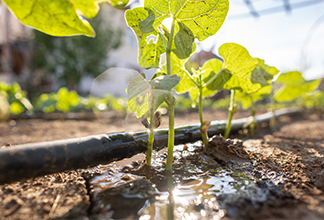Trend Watch: Are Foldable Phones the Future of Handhelds?
Written by Peter Nowak | Published on April 24, 2019
Written by Peter Nowak | Published on April 24, 2019
Samsung and Huawei got the technology world buzzing by unveiling bendable phones at the annual Mobile World Congress event in Barcelona in February. Looking like unassuming mobile devices at first glance, their respective Galaxy Fold and Mate X devices actually fold out to more closely resemble small tablets.
Is this the most promising development in cellphones since touch screens arrived in earnest about a decade ago? Or will foldable screens prove to be a novelty that quickly fades away? Read on to decide for yourself.
The Galaxy Fold and Mate X both work on the same basic principle: They have regular screens, like your run-of-the-mill smartphone, but they also fold open on a hinge to reveal a second, larger screen. It's much like opening a book.
Key to these new devices is a flexible LCD display covered by a bendable sheet of protective plastic. The technology is similar to what you'll find in flexible television displays, which some manufacturers have been showing off at electronics trade shows for the past few years.
The Galaxy Fold's outside screen measures 4.6 inches tall, while the unfolded inside provides 7.3 inches of horizontal display space. The Mate X works a little differently, in that the larger screen wraps around the outside of the phone instead of bending inward. That gives it a 6.6-inch tall front display and an 8-inch-wide unfolded screen.
Bigger screens without much added bulk are an obvious attraction. Having a device that can easily fit into a pocket or purse and yet can also transform into a tablet when needed offers the best of both worlds. More display space can come in handy for watching movies or playing games, but also for work purposes. More virtual workspace could allow manufacturers and business professionals alike to wring more productivity out of their phones.
Bendable screens also offer the promise of being more durable, although Wired magazine points out that may not be the case just yet. Foldable plastic screens are functional, but they are relatively easy to scratch and crack compared to glass. Some glass manufacturers have fully bendable options in the works — phones could become sturdier when and if such developments become reality.
More recently, the Fold's durability was questioned by some reviewers who reported issues with the display. Samsung, which was expected to release the phone in late April,officially postponed the launch to an unspecified date to allow for further testing. The Mate X , meanwhile, is targeted for release in mid-2019.
With the Galaxy Fold to sell for $1,980 (U.S.), and the Mate X for $2,600 (U.S.), cost is a major issue that could be a big barrier for early-adopter gadget lovers. A number of China-based manufacturers, like TCL, Oppo and Xiaomi, are developing their own prototypes, which could lead to increased competition and lower prices.
Google, meanwhile, is encouraging the development of foldable devices with an official "foldables" category for its Android operating system, which runs on the majority of the world's smartphones. Apple also has a patent on a foldable phone in the United States.
One common criticism of today's smartphones is that they all tend to look alike regardless of the manufacturer. With foldables, there's an industry consensus that bendable screens will open up a new frontier of design possibilities — and therefore differentiation among the makers.
Whether the buying public "bends" over backwards for these new foldable devices or not will be interesting to watch.
RBC Direct Investing Inc. and Royal Bank of Canada are separate corporate entities which are affiliated. RBC Direct Investing Inc. is a wholly owned subsidiary of Royal Bank of Canada and is a Member of the Investment Industry Regulatory Organization of Canada and the Canadian Investor Protection Fund. Royal Bank of Canada and certain of its issuers are related to RBC Direct Investing Inc. RBC Direct Investing Inc. does not provide investment advice or recommendations regarding the purchase or sale of any securities. Investors are responsible for their own investment decisions. RBC Direct Investing is a business name used by RBC Direct Investing Inc. ® / ™ Trademark(s) of Royal Bank of Canada. RBC and Royal Bank are registered trademarks of Royal Bank of Canada. Used under licence. © Royal Bank of Canada 2019. All rights reserved.
The views and opinions expressed in this publication are for your general interest and do not necessarily reflect the views and opinions of RBC Direct Investing. Furthermore, the products, services and securities referred to in this publication are only available in Canada and other jurisdictions where they may be legally offered for sale. If you are not currently resident of Canada, you should not access the information available on the RBC Direct Investing website.

Sustainable practices may mean untapped profits for Canadian farmers, says RBC Economics and Thought Leadership.

Top takeaways from a discussion about the climate challenges and solutions that can be found in farming.

Key takeaways from a conversation on Black representation in a recent episode of Disruptors, an RBC podcast.